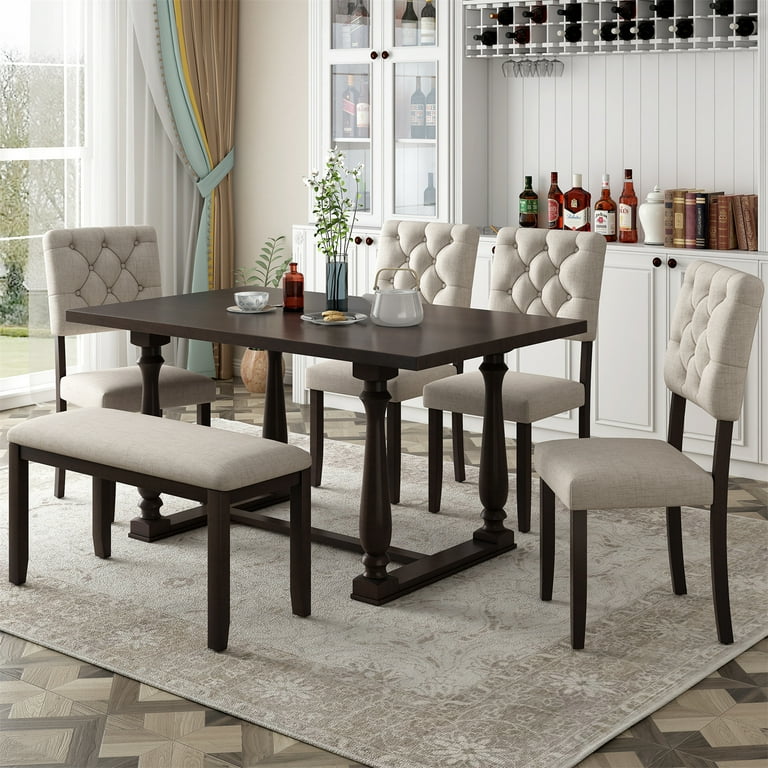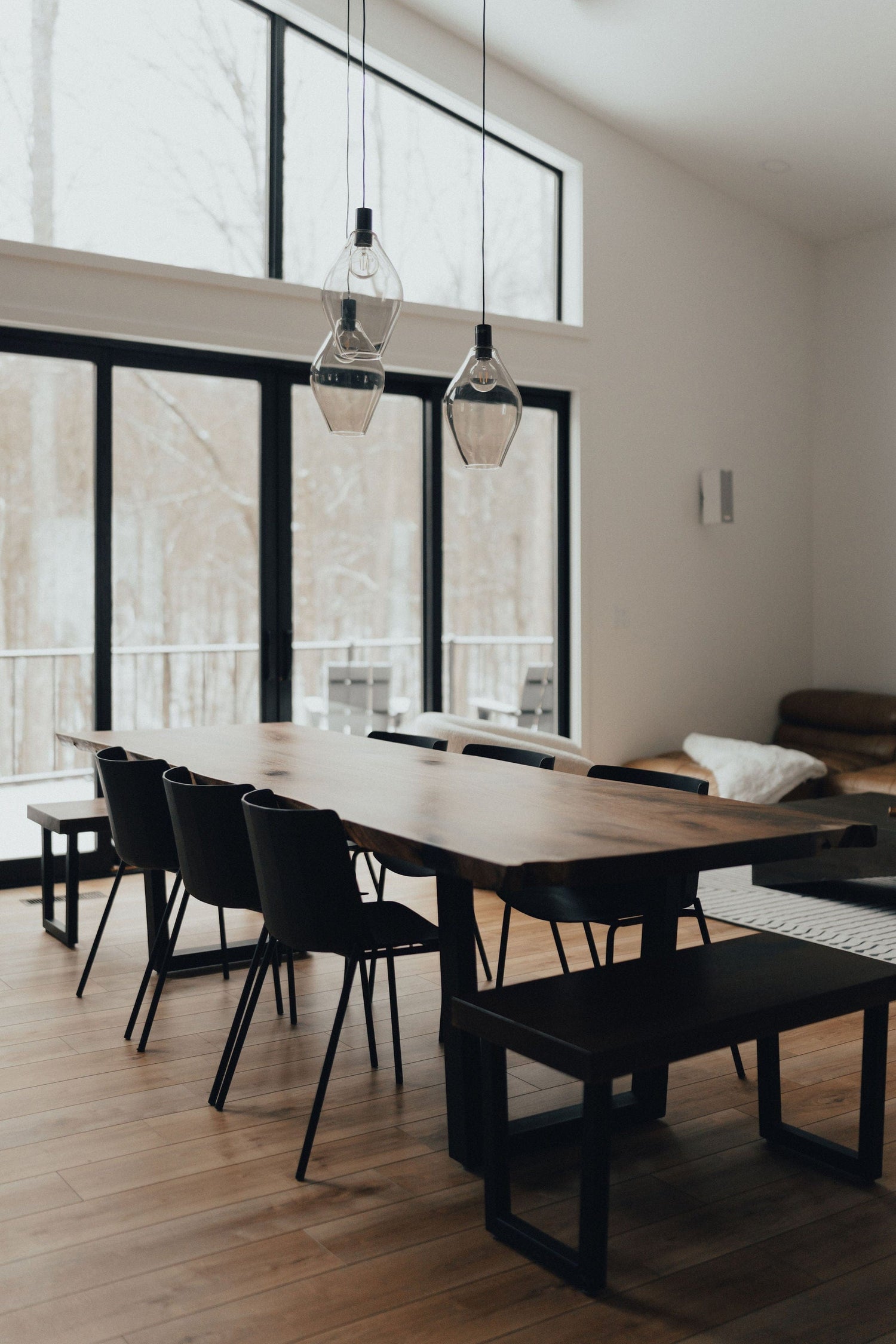How Dining Room Table Legs Can Change the Entire Aesthetic of Your Room
How Dining Room Table Legs Can Change the Entire Aesthetic of Your Room
Blog Article
From Conventional to Modern: Find the Perfect Dining Area Table Legs for Your Design
The option of dining area table legs plays an essential function in defining the total personality of your space, linking the space between typical craftsmanship and modern visual appeals. While traditional styles such as cabriole and transformed legs evoke a feeling of timeless class, contemporary styles like barrette and geometric options provide an opportunity for striking visual rate of interest. Reviewing the appropriate equilibrium between these styles needs a nuanced understanding of your existing décor and individual taste. As you take into consideration these elements, the concern stays: exactly how can you effortlessly incorporate these diverse leg styles to produce an unified dining experience?
Comprehending Table Leg Styles
The selection of eating area table leg designs can dramatically affect both the looks and capability of the area. Each leg design contributes distinct functional functions and aesthetic aspects, dealing with diverse design preferences and usage requirements. Understanding these designs is critical for picking the appropriate eating table that straightens with your general interior decoration vision.
For circumstances, conical legs use a clean, classic appearance that can enhance an area's style, while stand bases offer stability and make the most of legroom, making them optimal for smaller rooms. Barrette legs, a hallmark of mid-century modern-day style, present an industrial flair, permitting a ventilated, open feeling. Trestle legs evoke rustic beauty, providing robust assistance and a sense of eternity.
Moreover, the selection of products plays a significant duty. Wooden legs can bring heat and structure, whereas steel choices typically convey a smooth, modern ambiance. Ultimately, comprehending table leg styles is necessary for producing a cohesive eating area that mirrors personal design while guaranteeing practicality and comfort. By attentively thinking about these aspects, you can enhance both the practical and visual allure of your eating room.
Traditional Table Leg Options
When selecting dining-room table legs, traditional alternatives often embody ageless sophistication and workmanship. These styles show an abundant heritage and a dedication to top quality, making them excellent for those that value traditional visual appeals.
One of the most legendary standard leg designs is the cabriole leg, defined by its stylish bent form. This layout frequently features ornamental makings and is most typically located in Queen Anne and Chippendale furnishings. An additional popular choice is the transformed leg, which boasts a series of smooth, rounded shapes that offer a classic appearance while preserving stability.
Additionally, the straight leg, while easy, uses a strong and unadorned structure that can blend perfectly with a variety of tabletop styles. For those attracted to ornate describing, claw-and-ball feet legs stimulate a feeling of magnificence and can act as a sensational focal factor in any kind of eating area.
Finally, pedestal bases, although not purely legs, offer an alternative traditional alternative that enables adequate legroom and can be perfectly sculpted. Each of these conventional leg styles adds to the general ambiance of an eating area, weding function with visual appeal.

Modern Table Leg Designs
Modern table leg layouts provide a diverse series of styles that emphasize clean lines and innovative products. These styles frequently focus on performance while working as striking centerpieces within an eating area. Minimal aesthetic appeals prevail, with legs crafted from products such as metal, glass, and engineered timber, which add visit here to a contemporary and airy feel.
One preferred style is the hairpin leg, defined by its slim, tapered framework that supplies security without overwhelming the tabletop (dining room table legs). This design is typically found in mid-century modern-day furniture and can effortlessly enhance various table forms. Another pattern is making use of geometric shapes, where legs may tackle angular or unbalanced forms, adding aesthetic passion and a touch of creativity

Mixing Designs for Special Areas
Commonly, home owners look for to develop special eating areas that reflect their personal design by blending different design components. This technique enables the unification of diverse visual appeals, resulting in an unified click this yet unique setting. As an example, coupling a rustic wood table with sleek, modern steel legs can produce a distinctive contrast that raises the room's total charm.
In addition, incorporating vintage table legs with contemporary table tops can evoke a sense of history while maintaining a contemporary sensibility. Such mixes not only showcase specific taste yet likewise encourage imagination, permitting property owners to curate a room that feels both individual and inviting.
Shade plays a vital function in this mixing process; picking table legs that complement or comparison with the existing color pattern can boost visual passion. Whitewashed legs can soften the daring of a dark table surface, producing a well balanced visual.
Tips for Selecting the Right Legs
Picking the right table legs is important for attaining both functionality and aesthetic charm in your dining room. Begin by considering the general design of your area. Conventional setups profit from legs that feature elaborate carvings or transformed designs, while contemporary areas might ask for sleek, minimalist styles.
Following, analyze the height and stability of the legs. dining room table legs. Typical dining tables range in between 28 to 30 inches in height, so make certain the legs enhance this measurement for comfort. In addition, robust materials, such as visit the site hardwood or metal, can improve security and long life
Assess the leg shape also-- choices consist of right, tapered, or stand layouts. Straight legs provide a traditional look, while tapered legs can add a touch of sophistication. Pedestal bases give sufficient legroom and are optimal for smaller sized areas.
Final Thought
In recap, selecting the perfect dining area table legs needs careful factor to consider of both typical and modern-day styles. By balancing leg style, elevation, and product with the general décor, a cohesive and inviting atmosphere can be attained.
The variety of eating space table leg styles can significantly influence both the visual appeals and functionality of the room. Ultimately, comprehending table leg styles is vital for creating a natural eating area that mirrors individual design while making certain practicality and convenience.One of the most famous traditional leg designs is the cabriole leg, characterized by its stylish curved shape. Straight legs supply a classic appearance, while tapered legs can include a touch of beauty.In recap, selecting the suitable eating room table legs needs cautious consideration of both standard and modern styles.
Report this page